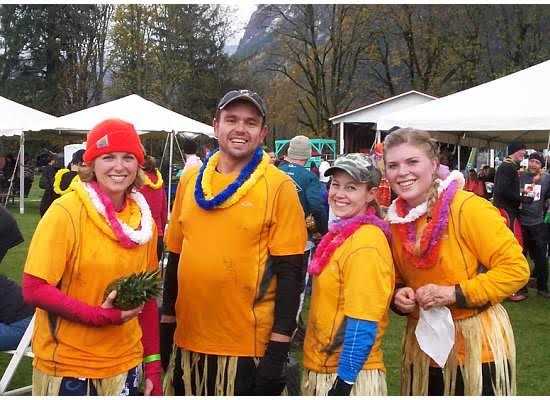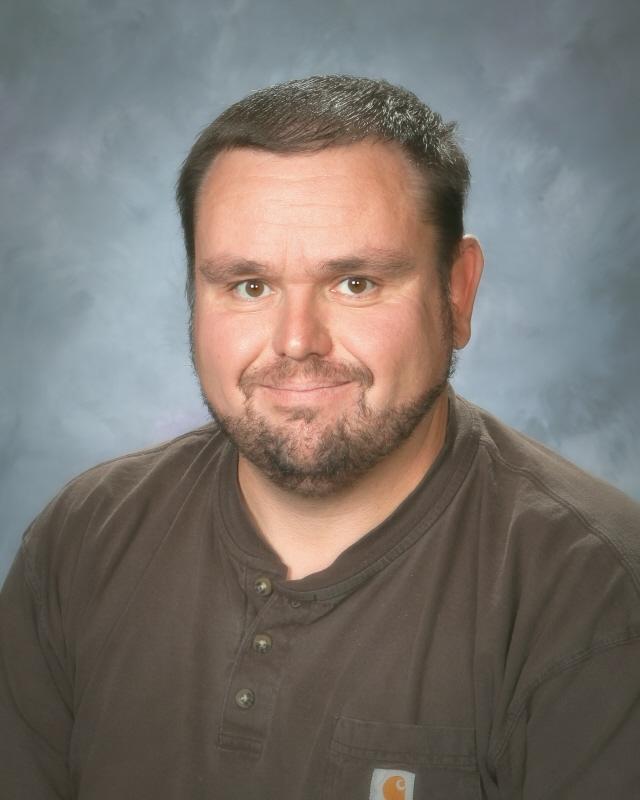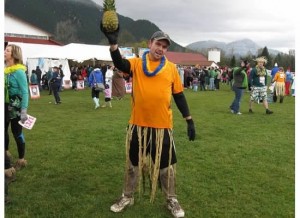
Teachers Beth Hammergerg and Matt Asplund compete in their first Pineapple Run with frreinds Barb Fehr and Jill Bennett in 2011 just weeks before Asplund’s cancer diagnosis. Photo courtesy of Beth Hammerberg
Running for his life
February 25, 2016
Dec. 2, 2011. It was an average doctor’s appointment for science teacher Matt Asplund, and it started off deceivingly well. The blood pressure check delivered great news: he could finally come off his blood pressure meds. In fact, the last few months had been good, really good. Asplund had been exercising more, eating less, and losing weight. He was hardly hungry anymore. For someone trying to lose weight it was almost too good to be true.
But very quickly all the good things would prove to be trivial. The weight loss, the low blood pressure, the great diet — all of it would come crashing down.

That crash began with the physical examination. The doctor immediately found and alarming bulge around Asplund’s spleen. Hoping for the best, the doctor ordered a CT scan and sent him down to get his blood tested on the way out, with directions to return for his CT scan at 6 that evening.
Then came the phone call. It wasn’t 6 yet, but the doctor needed to talk with Asplund, in person.
“I could tell something wasn’t right in his voice. As I was crossing the street [to the hospital] I knew something didn’t sound right,” said Asplund. “You don’t know what could be wrong, and never in a million years would I have thought I’d have cancer.”
The diagnosis was indeed cancer, Chronic Myelogenous Leukemia or CML, cancer of the bone marrow cells that produce white blood cells. The cancer causes extremely high levels of white blood cells, and symptoms include, among other things, an enlarged spleen.
“At that point I thought I was done. Everything I’ve ever been told about cancer is there’s two places you don’t want it; you don’t want it in your bones and you don’t want it in your blood. Bone marrow’s both of those, so I immediately thought, ‘this is it,’” said Asplund. “I was thinking, ‘Okay, I wonder how many months I’ve got left, weeks, days, who knows?’”
All of a sudden the puzzle pieces fell into place.
“I should have seen all the signs,” said Asplund “I underwent rapid weight loss, but I was also trying to lose weight, and I was running every day and I was completely exhausted, which was the second clue. I was eating less and I had no cravings for food because my spleen was pushing so hard on my stomach. I just thought that that was part of the best diet I was ever on. I didn’t put them all together, and realize that something was wrong. I just thought everything was really right.”
Then there were the phone calls: to family, friends, co-workers.
“At that point, my brain was still swimming, and that’s when I had to start making some phone calls. That’s that worst thing you’ll ever, ever have to do, is call family to tell them that you’ve got cancer,” said Asplund.
While the initial shock continued to settle in, Asplund immediately underwent a bone marrow draw. A drill was taken to his pelvis, with only local anesthesia, and a sample of bone marrow was drawn out and quickly sent to University of Washington for further testing.
“It’s a very uncomfortable feeling,” said Asplund. “All I could do at that point was start cracking jokes as my defense mechanism. I had the nurses rolling, laughing.”
The tests revealed Asplund’s white blood cell count to be 43 times normal levels. The normal levels of 4,000 to 6,000 white blood cells per microliter were dwarfed by Asplund’s 240,000.
After a four night stint in the hospital and a session of oral chemotherapy, Asplund was at work, less than a week after being diagnosed.
“I had to sit in the hospital for four days, not feeling really sick, which will drive you crazy. [I was] hooked up to IV’s and everything else, just sitting there,” said Asplund.

Now that the initial chaos and mayhem had subsided, Asplund had to come to terms with the journey ahead. This reached its culmination winter break, a few weeks after his initial diagnosis.
“I had three weeks of time where I just got more and more angry,” said Asplund. “I remember the exact day, it was the night of Dec. 25, Christmas Day. I literally cried myself to sleep, angry, and mad at the world. At that point I just stopped all of a sudden and said, ‘That’s it, I’m not going to cry anymore, I’m done with this.’”
After hitting the rocky bottom of grief and anger, Asplund quickly clambered to his feet.
“It’s amazing. I could not wait to get back to work,” said Asplund. “At that time I had one of the worst classes I had ever dealt with, and I couldn’t wait to see those kids. I was smiling ear to ear. I think that was one of my best weeks teaching in my life, because I was so happy to be back in my classroom, back in my routine.”
Asplund’s prognosis wasn’t dismal, but it certainly wasn’t good. As far as treatment, Asplund had two options: and oral drug known as Sprycel, or a bone marrow transplant.
“I had a 10 percent chance of my body completely rejecting Sprycel,” Asplund said. “If that would happened, then I would have to have a bone marrow transplant, which does cure CML. They completely radiate you, they kill everything. But they have to find a [bone marrow]
donor who is preferably a relative. My family would have no problem stepping up I’m sure, but there is still a one third chance of failure, and if that happens, cckkk, done.”
Fortunately, Sprycel worked, and has continued to work. However, unlike the bone marrow transplant, the drug only suppresses CML. This means Asplund will have to take the medication every day for the rest of his life.
Asplund’s story has the thread of serendipity woven in with the fear and tragedy. Weeks before his diagnosis, Asplund was asked by his co-worker and close friend, science teacher Beth Hammerberg, to join her in a run for charity.
“Because I was losing so much weight, and I was running and jogging, Mrs. Hammerberg asked me if I would join her in a run. I said, ‘Okay, what is it?’ She said, ‘It’s a five kilometer run. It’ll cost you 50 bucks to enter. It’s for a good cause, it’s for the leukemia and Lymphoma Society.’ I said to myself, ‘Okay, I’ll do it. I guess it’ll help somebody some time,’ I had no clue that three weeks later I would be diagnosed myself,” said Asplund.
The Winter Pineapple Classic 5k — in which teams raise money for the Leukemia and Lymphoma Society before racing — has become a tradition for Asplund, Hammerberg, and friends. Asplund was unable to participate in 2012 due to doctor’s orders, but resumed the tradition in 2013. Last year their team, Matty’s Angels, raised more than $4,000. Asplund has participated every year since, and this year Matty’s Angels (named after Asplund) will be together again running in the fight against leukemia.

Annika Asplund • Feb 26, 2016 at 6:13 am
This is my uncle. He could very well be one of the strongest people I know. I only see him maybe three or four times a year, but I always appreciate seeing him. I remember when my mom told us that he had cancer. I knew he would make it. My sister broke down into tears. In May, he was so peppy at the FFA State Convention when he saw me perform on stage for FFA Talent. I’m so proud of him and how he has dealt with this journey. I love him with all my heart!
Maria ZavalaCompton • Feb 25, 2016 at 4:43 pm
I remember sitting in his freshman second period class and telling us that he had cancer. All I could think of how much I enjoyed that class.